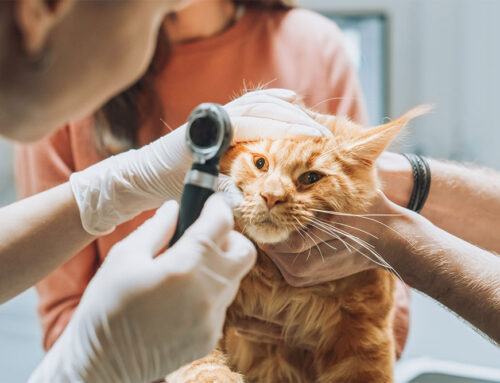Pets have lived alongside people for thousands of years, providing companionship and protection, performing specific jobs, and improving lives. But, unfortunately, despite all the good that pets add to your life, they also have the potential to transmit harmful diseases to the humans in your household.
Zoonotic diseases are transmissible between pets and people. Public health officials closely monitor and regulate the most harmful of these diseases, such as the rabies virus. Most people do not catch serious diseases from their pets, but the possibility exists, and Livingston Veterinary Hospital wants to ensure pets and their people stay safe. Here is our guide to zoonotic diseases in pets.
Who is at risk for contracting diseases from their pet?
Anyone can contract a zoonotic disease from their pet under the right circumstances, but the chances are low in healthy adults. Immunocompromised people, such as those with diabetes, HIV, cancer, or taking immunosuppressive drugs, are most at risk, because they cannot effectively fight germs and are more likely to get sick from minor exposures. Children are also at risk, because they do not have the same understanding of hygiene as adults, and their immune systems are not yet mature.
What are the most common zoonotic diseases in pets?
Around 250 zoonotic diseases exist worldwide, but only around 40 of those are passed from dogs or cats to humans. Most are uncommon to rare, but a few occur with relative frequency. The most common zoonotic diseases you can pick up from your dog or cat include:
- Rabies — This virus is transmitted through saliva or bite wounds and causes neurological damage and death in unvaccinated pets and people.
- Leptospirosis — Pets can contract leptospirosis bacteria through contaminated water or contact with rodent or wildlife urine, and then spread the disease through their own urine. Lepto causes liver and kidney failure.
- Intestinal parasites and bacteria — Many pet intestinal parasites and bacteria, including roundworms, hookworms, giardia, cryptosporidium, salmonella, and campylobacter, can be transmitted.
- Ringworm — This fungal skin infection is common in dogs and cats, and can lead to ring-shaped, red, itchy lesions. Ringworm is highly contagious between pets and people.
- Tick-borne disease — Tick-borne disease is not contagious from pets to people, but pets can bring disease-carrying ticks into your home that can then bite and infect other household members. Lyme disease is a common tick-borne illness in humans that can be difficult to diagnose and treat.
- Sarcoptic mange — Burrowing mites can cause sarcoptic mange (i.e., scabies in humans), an itchy rash that can infect pets or people.
- Toxoplasmosis — This parasite is common in cats, who typically carry the disease without showing illness signs. Toxo is spread through infected feces, so high-risk individuals—typically pregnant women and children—should be careful around their cat’s litter box.
- MRSA — Methicillin-resistant staphylococcus aureus can cause serious skin or internal infections in susceptible individuals. Many people and pets carry this bacteria harmlessly, but others develop illness after exposure. MRSA is resistant to normal antibiotic treatment and extreme cases can result in death.
- Plague — Pets and people in rural, western states are at risk for contracting plague from infected fleas or other infected pets. Plague causes a generalized illness that can lead to death if not identified and treated promptly.
How can I prevent my pet from contracting or transmitting a zoonotic disease?

Pets who receive regular preventive veterinary care, including vaccinations, parasite testing, and parasite prevention, are less likely to contract diseases they can transmit to humans. You can easily eliminate the potential for the majority of zoonotic diseases with monthly prevention medication that will keep your pet and your home parasite-free.
You should also practice good personal, home, and pet hygiene, which includes the following:
- Frequent hand-washing after handling pets or their feces or urine
- Keeping outdoor sandboxes covered
- Wearing gloves while cleaning the litter box or scooping dog poop, especially if you are at high risk for disease transmission
- Bathing pets regularly
- Keeping pets from drinking standing water
All things considered, pet ownership is far lower risk than reward. Severely immunocompromised people should carefully consider the risks, but most others who practice good hygiene can safely live with pets who receive regular veterinary care. Livingston Veterinary Hospital believes vaccines and parasite control play a large role in preventing zoonotic disease. Call us to schedule your pet’s next wellness visit to keep them, and your human family, healthy.







Leave A Comment